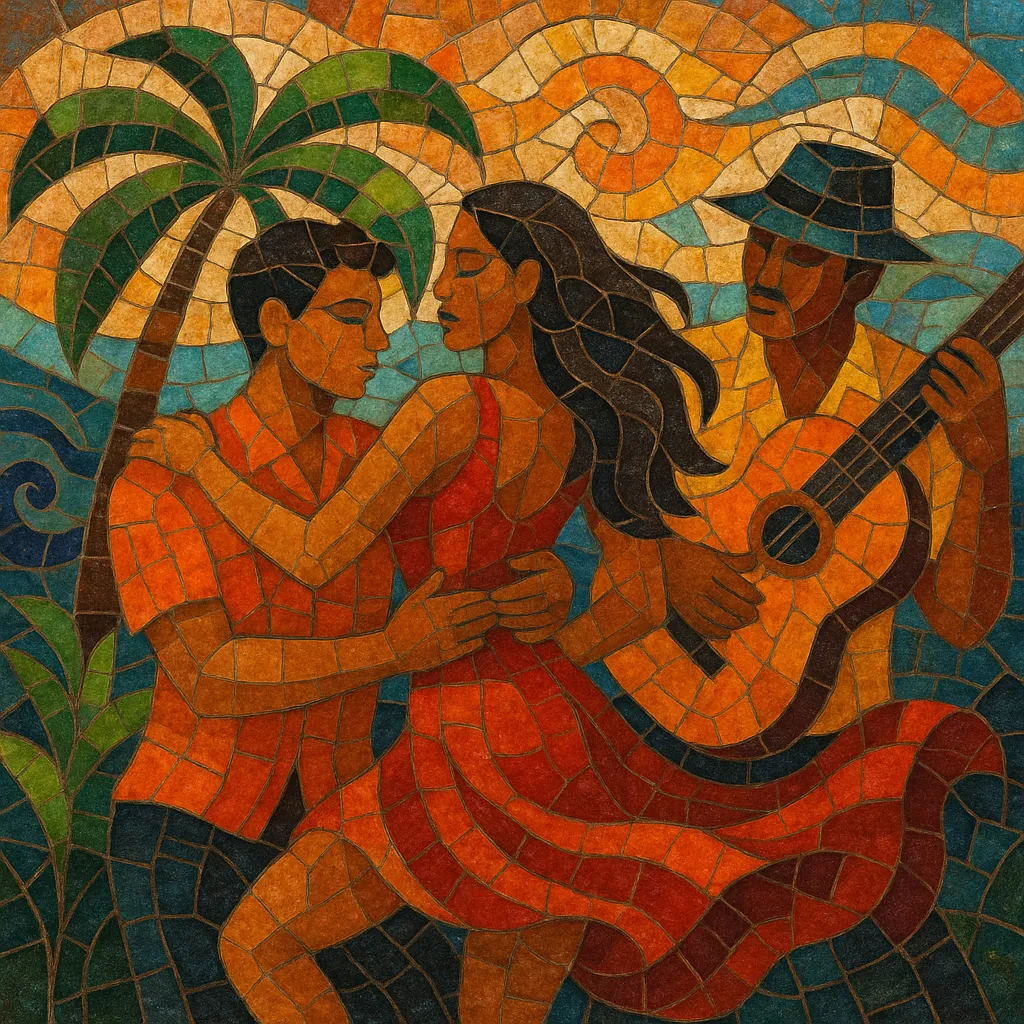Lambada is a Brazilian dance-pop style that surged from the north of Brazil in the 1980s and exploded internationally at the decade’s end.
It blends local Amazonian rhythms with Caribbean dance music and glossy late‑’80s pop production, yielding a sensual, swaying groove designed for partner dancing. Signature elements include syncopated percussion, clean lead guitars inspired by Pará’s guitarrada, buoyant bass lines, bright synths, and ear‑catching hooks.
While its global fame is tied to Kaoma’s 1989 smash “Lambada,” the style grew from regional scenes around Belém and later Bahia, drawing on carimbó and other Afro‑Indigenous traditions as well as cumbia, merengue, calypso/soca, and zouk.
Lambada coalesced in northern Brazil, especially in Pará (around Belém), where Afro‑Indigenous rhythms such as carimbó and regional guitar‑driven styles like guitarrada met a wave of Caribbean and Latin influences (cumbia, merengue, calypso/soca) and dance‑floor pop aesthetics. The name “lambada” (Portuguese for a whip-like strike) came to denote both a sensual, close‑embrace dance and the music that powered it.
The style hit worldwide in 1989 when the France‑Brazil group Kaoma released “Lambada (Chorando Se Foi),” adapting a Portuguese version of the Bolivian song “Llorando Se Fue.” The single and its iconic music video propelled lambada to the top of charts across Europe and beyond. Legal disputes over authorship were resolved with acknowledgment of the Bolivian source, but the song cemented lambada’s international identity—slinky rhythms, bright guitars, and romantic refrains.
In Brazil, lambada’s peak was brief; by the early 1990s, axé music rose in Bahia and mainstream tastes shifted. However, the dance vocabulary survived by fusing with French‑Caribbean zouk, evolving into the “zouk‑lambada” dance scene. Sonically, lambada’s guitar textures and upbeat, tropical pop feel fed into later Pará scenes (including the electronic brega/tecnobrega movement) and left a lasting stamp on Brazilian pop and dance‑oriented festival culture.
Today, lambada is remembered both as a global late‑’80s phenomenon and as a regional Brazilian hybrid that bridged traditional Amazonian grooves with cosmopolitan dance pop. Its smooth swing, romantic sensibility, and twinkling guitar lines remain signature references for artists seeking sunny, dance‑ready Brazilian flavors.


